-
Car Reviews
- All reviews
- Midsize SUVs
- Small cars
- Utes
- Small SUVs
- Large SUVs
- Large cars
- Sports SUVs
- Sports cars
- Vans
Latest reviews
- Car News
-
Car Comparisons
Latest comparisons
- Chasing Deals
China’s ‘Big Dog’ is now sniffing around Aussie roads and trails. But is it merely a poodle in rottweiler clothing?
If one imagines a motoring dystopia where the landscape is overwhelmed by anonymous, indistinguishable similarly priced SUVs with indistinguishable driving characters offered by largely indistinguishable brands, 2025 seems at times hell-bent on making it a reality.
So it’s easy to be charmed by the presence of the new GWM Haval H7 on sheer left-field design panache alone. And to a point where it’s a shame it hasn’t carried over its Chinese homeland model name, Big Dog, to local showrooms, if merely for added charisma’s sake.
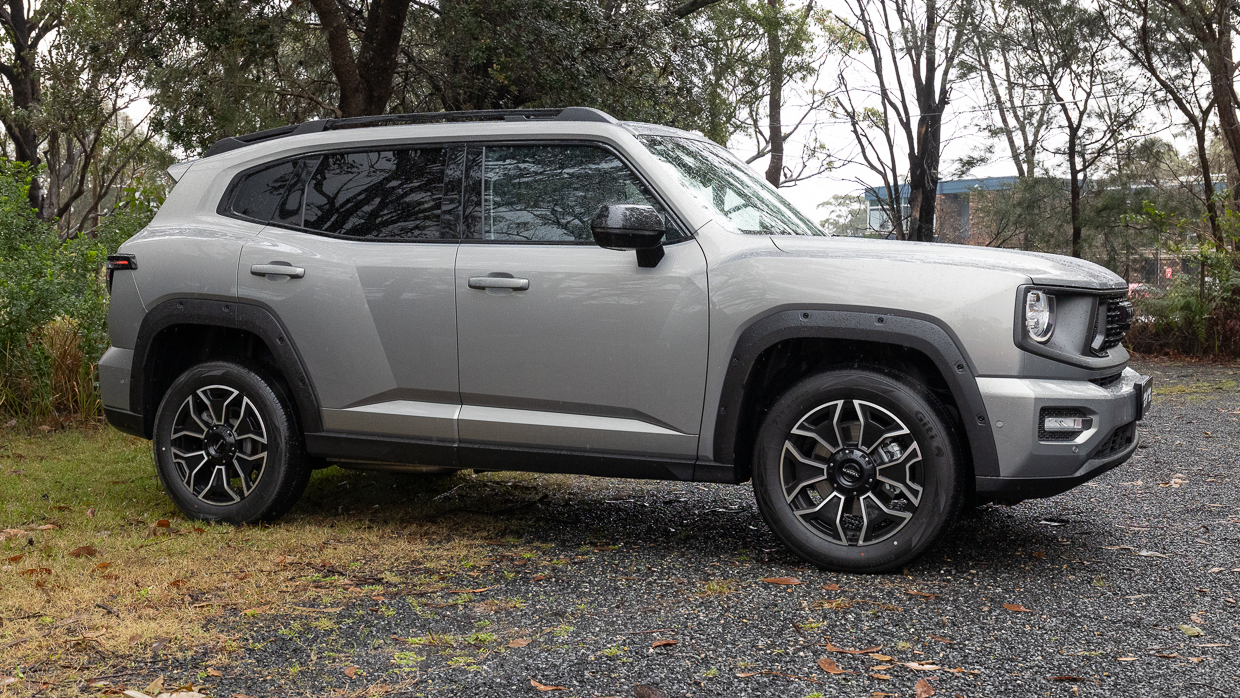
The H7 stylistic robs from Ford Bronco, Jeep Wrangler, Defender, Toyota FJ Cruiser and other all-terrain icons — plus liberal pilfering of 70s roadcar Americana in its front fascia — with such a deft nonplagiaristic hand that it completely owns its unique aesthetic. It’s a commendable disguise for what’s basically a reskinned H6.
Offered at launch in a sole Vanta trim guise at $46,990 driveaway, it is, GWM says, the missing link between the H6 its based off and the Tank 300 with which it hopes to rob “rugged” and “adventure” vibes: two words that feature large in the erstwhile Big Dog’s marketing.
But one aspect pulling up the handbrake hard on H7’s all-terrain aspirations is powertrain. Unlike either of H7’s aforementioned stablemates — both with all-wheel-drive opportunities — the newcomer is offered in just one hybrid guise…exclusively with front-wheel drive. It’s more a Bronco Sport than a Bronco rival, essentially.
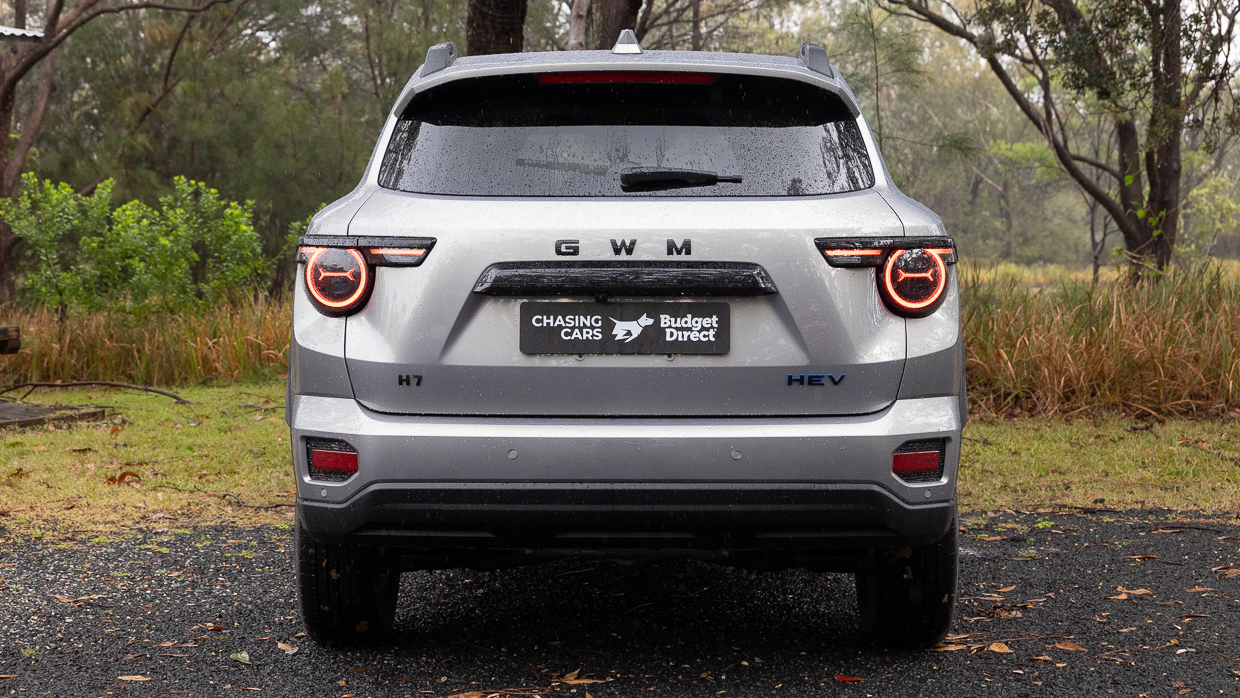
The Big Dog isn’t going too far off road, regardless of how much clear sat between its arches and its machine faced 19-inch wheels suggest otherwise.
But so what? A good driving, family friendly, comfy, punchy and economical SUV with left-field styling could be easy to recommend — especially in quasi-dystopian times — if the quality is there, its ducks line up and price is right. Regardless of how much rugged adventure it can actually deliver.
The cleanskin H7 is $46,990 in standard issue Hamilton White, though our Moon Grey tester brings premium paint ($495, also in Dusk Orange and Golden Black) for a driveaway total of $47,485.
With almost every brand playing in the massive midsize SUV segment offering a $47K alternative, the list of alternatives is too vast to cover off here. But the most logical cross-shop is arguably the Haval H6, which is of course H7’s twin under the skin.
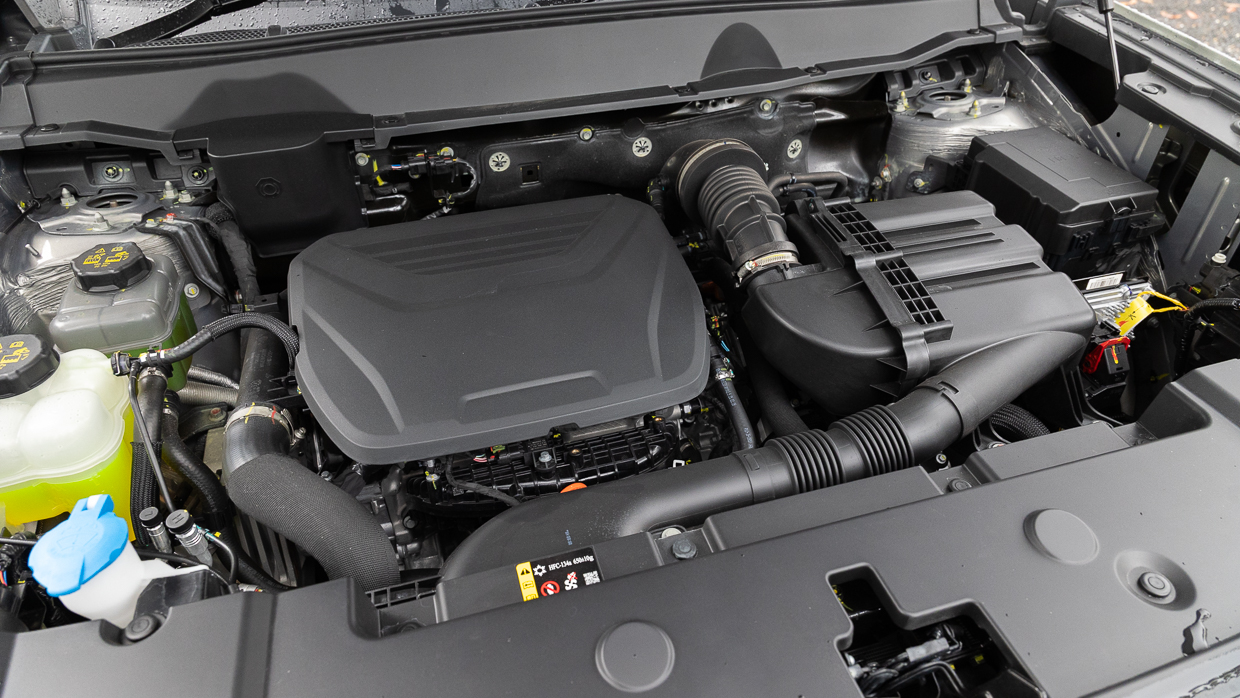
The H7 fits a plugless series-parallel hybrid system adopting a 1.5-litre turbo petrol engine with combined outputs of 179kW and 530Nm, driven through the front wheels. Formally it’s called the H7 Vanta HEV.
The same powertrain is offered in the H6 in Lux (from $40,990 D/A) or Ultra (from $43,990 D/A) guises, while kicking off with 2.0L turbo power (Lux, from $35,990 D/A) and topping out with H6’s range-topping Ultra plug-in hybrid with all-wheel drive (from $50,990 D/A).
Meanwhile, GWM’s 4×4-dedicated Tank 300 comes in diesel (from 47,990 D/A), turbo petrol (from $49,990 D/A) and larger 2.0-litre turbo-petrol hybrid (Ultra HEV, from $56,990 D/A) options.
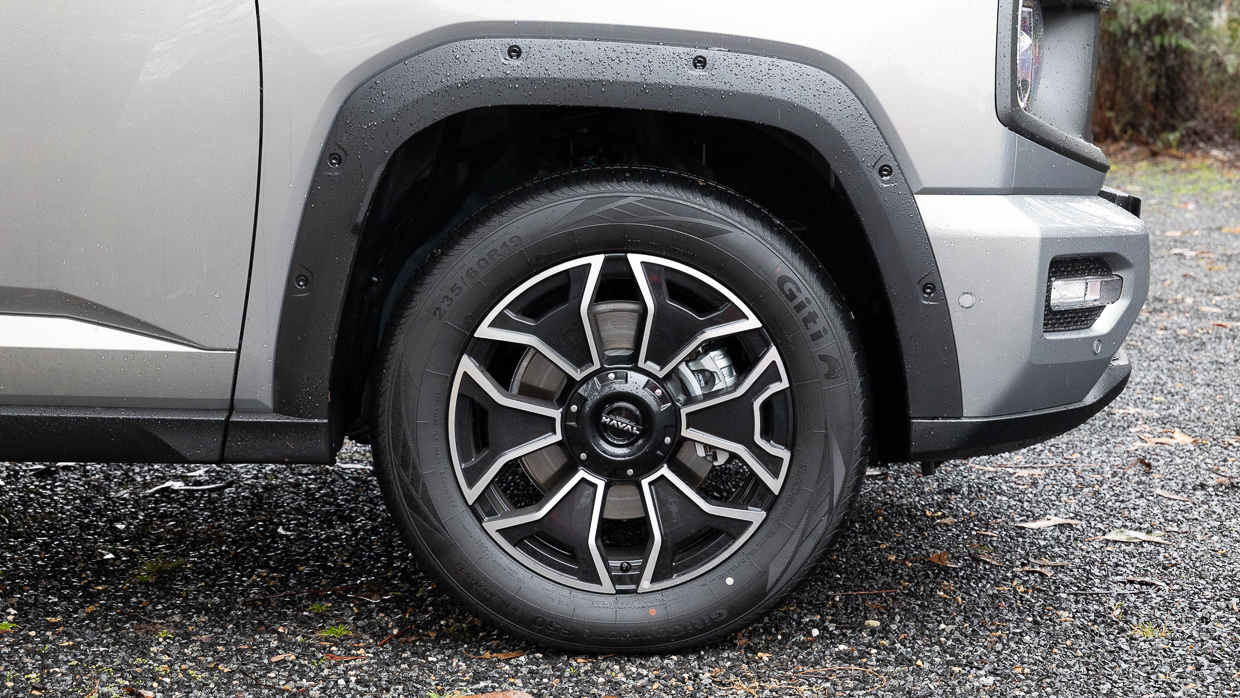
While GWM Australia promises more versions of H7 – with more powertrain choice – will come to Aussie showrooms, the Vanta HEV front-driver is currently the only option. The Vanta equipment list looks to mirror the high-spec Ultra more closely than entry-level Lux fit-out and includes:
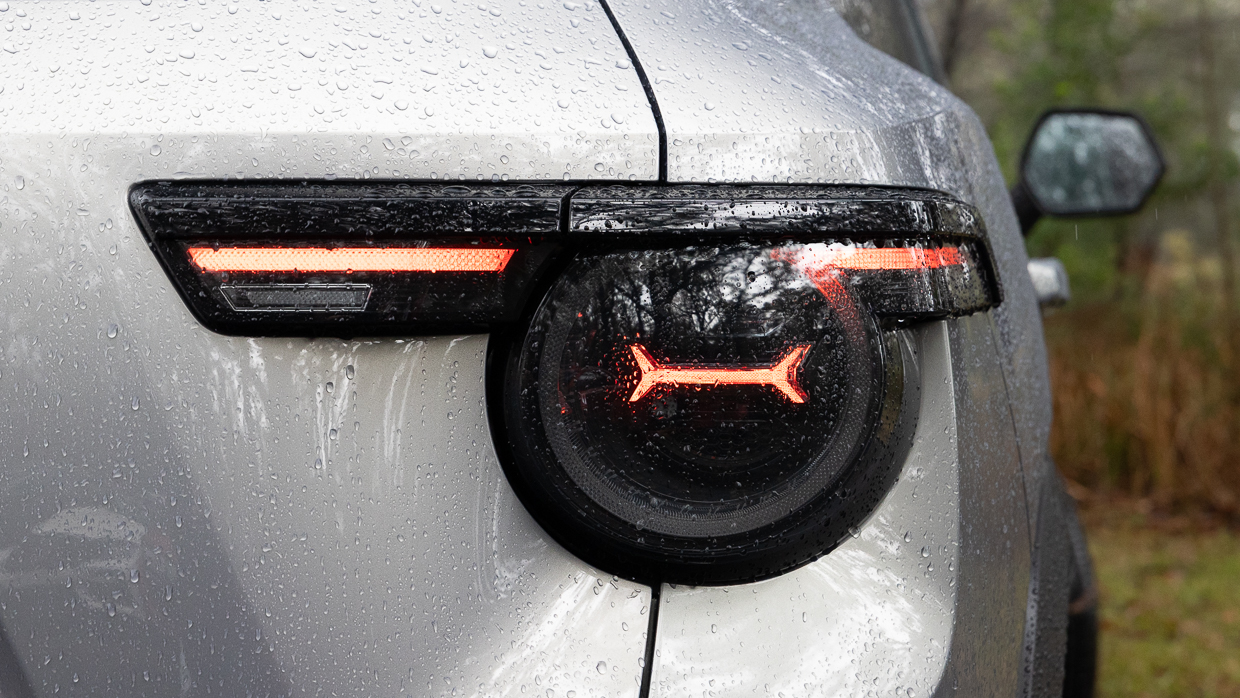
GWM’s local head of marketing, Steve Maciver, has revealed to Chasing Cars that the “longer-term story” is that the “H7 lineup will evolve and become a mainstay of the Haval lineup” in Australia, adding that “there are more developments to come in terms of a new powertrain.”
Despite the aesthetic’s all-terrain ‘suggestion’, our time with the front-driven, H6 SUV underpinned newcomer was conducted exclusively on road. It’s not that you couldn’t hit the trails in the H7, but how it attempts to get 179kW and 530Nm to the asphalt, dry or wet, raises a question of whether or not you should.
The 1.5-litre turbocharged petrol four doles out 110kW and 230Nm, which would make for a lazy experience in 1810kgs of high-riding SUV. It’s really the 130kW and 300Nm of electric assistance that does the heavy lifting.
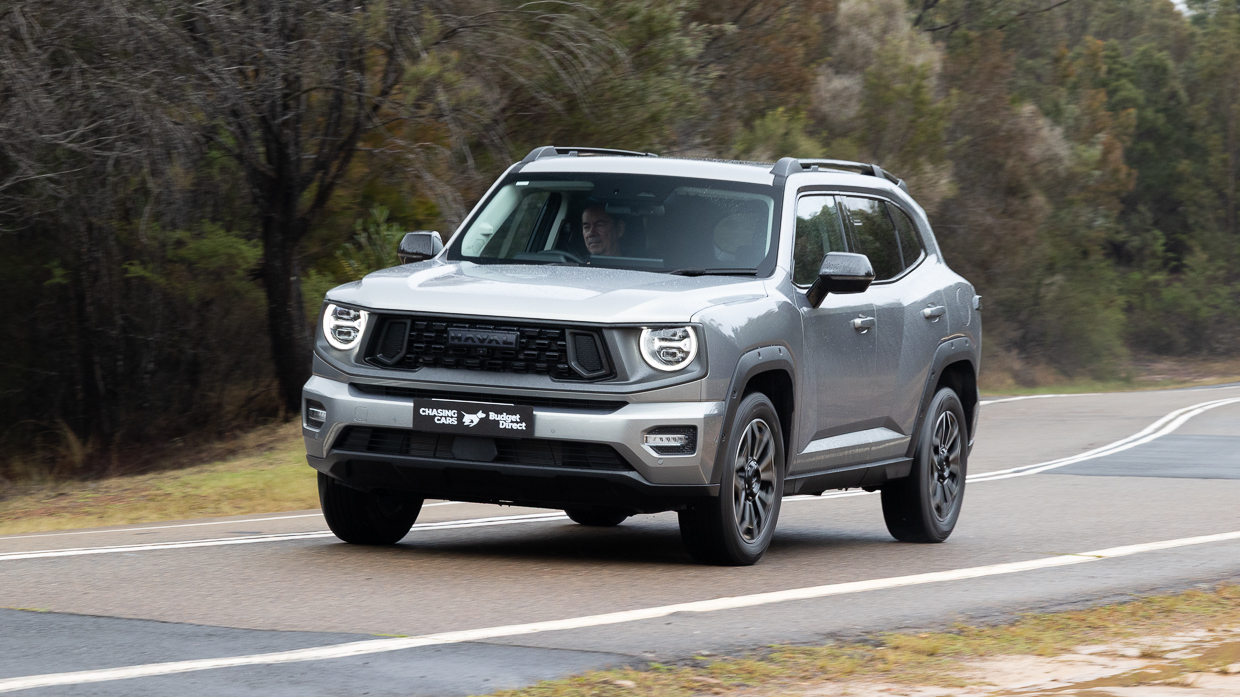
Like Toyota and Hyundai rivals, the H7 is a proper self-charging series-parallel hybrid (not a so-called mild hybrid). But unlike RAV4 or, say, Santa Fe, the GWM’s electric-only drive clocks off beyond 35km/h, where either pure petrol or petrol-electric drive takes over.
When the turbo engine is on boil and the hybrid system’s petite 1.76kWh battery has ample charge, the H7’s roll-on acceleration is very lusty. Its overtaking stonk is effortless.
But off the mark or, worse, exiting a side street attempting to plug a hole in moving traffic, the H7 can burst into wheelspin its traction control takes a moment to catch. It demands an easy right foot in the dry and a more concentrated input in the wet, though the 235mm Giti tyres do drum up more grip than appearances suggest.
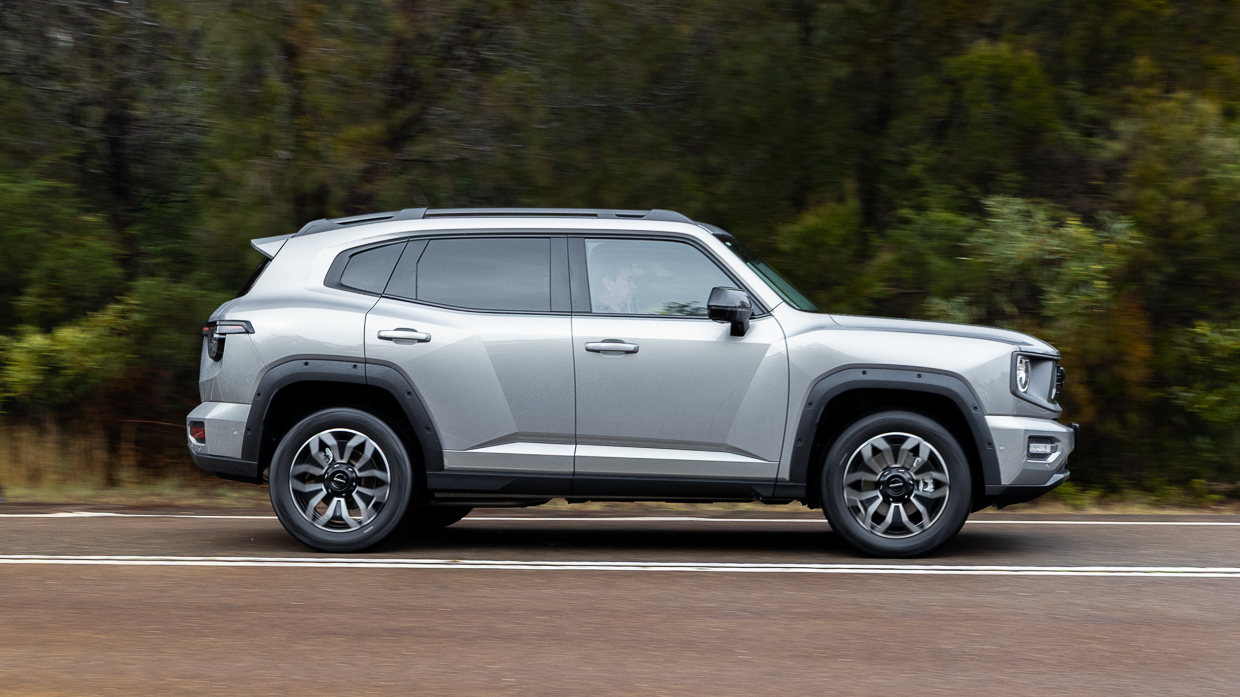
It’s the same HEV powertrain as the H6, if seemingly more refined. The pronounced pause as low-speed EV drive transitions into hybrid mode due to the lethargic engine start-up, seems to have been mostly tuned out of this H7 powertrain calibration.
There’s decent refinement too. The turbo 1.5’s smooth matter makes the electric-petrol shuffling less jarring and pronounced than Toyota’s natural-aspiration-centric rival system. And the unusual so-called “hybrid transmission” coupling and shuffling the drive types resists sending the petrol unit into a loud rev-a-thon, as some rival systems do.
Its enthusiasm to accelerate, peaky throttle and narrow EV bandwidth makes getting anywhere near the H7’s 5.7L/100km consumption claim a miserable ordeal of self restraint. Drive to the prevailing traffic in real-world conditions, and we saw consumption sit around the mid-sevens, or markedly thirstier than its segment’s most-frugal offerings (in the fours).
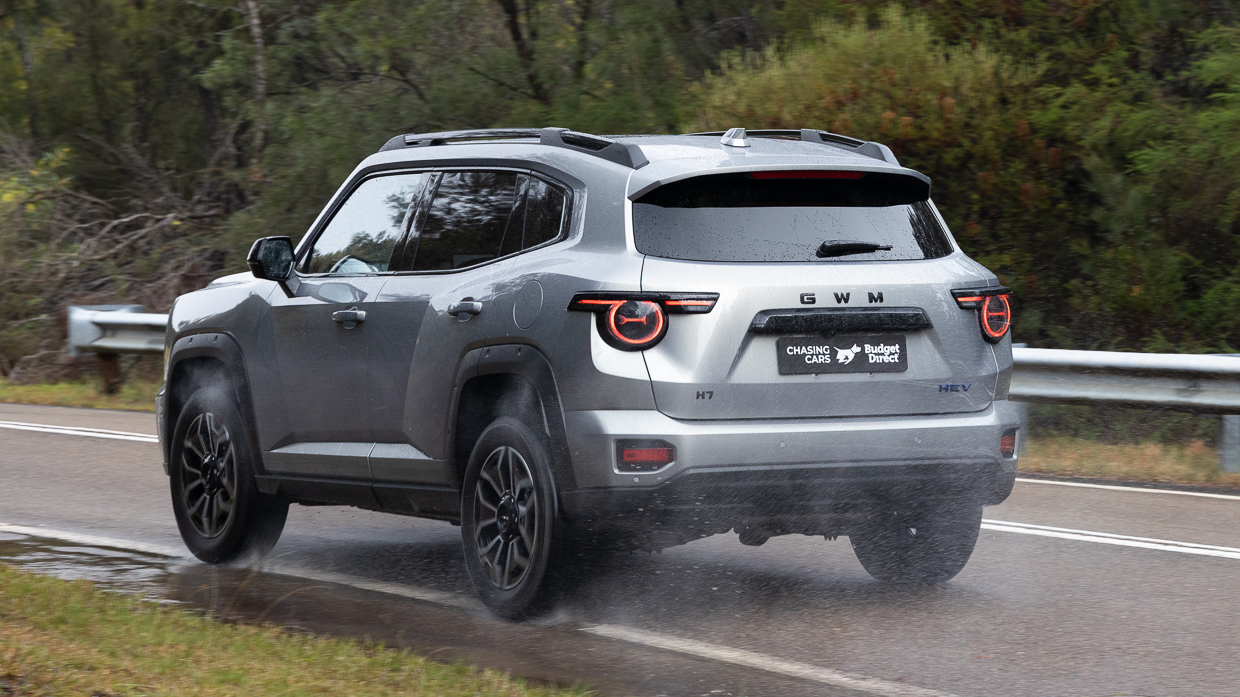
Ride quality is surprisingly firm. What this brings in terms of solid body control it trades for in incessant vertical movement, though the H7 offers acceptable compliance across bumps small and large.
However, the H7 sits so high on its suspension, especially in the rear, that it doesn’t quite plant itself on the road as confidently as the H6 with which it shares its platform. The slightly top-heavy, on-stilts effect — a seemingly high centre of gravity — lends itself to a little more heave in the corners.
While the chassis doesn’t seem to work the best from the tyres’ lateral grip, it does hold on surprisingly well. Even in the wet. But other elements of the driving experience, such as the inert and aloof steering, do not inspire confidence when cornering. It’s a hard vehicle to trust when you push on.
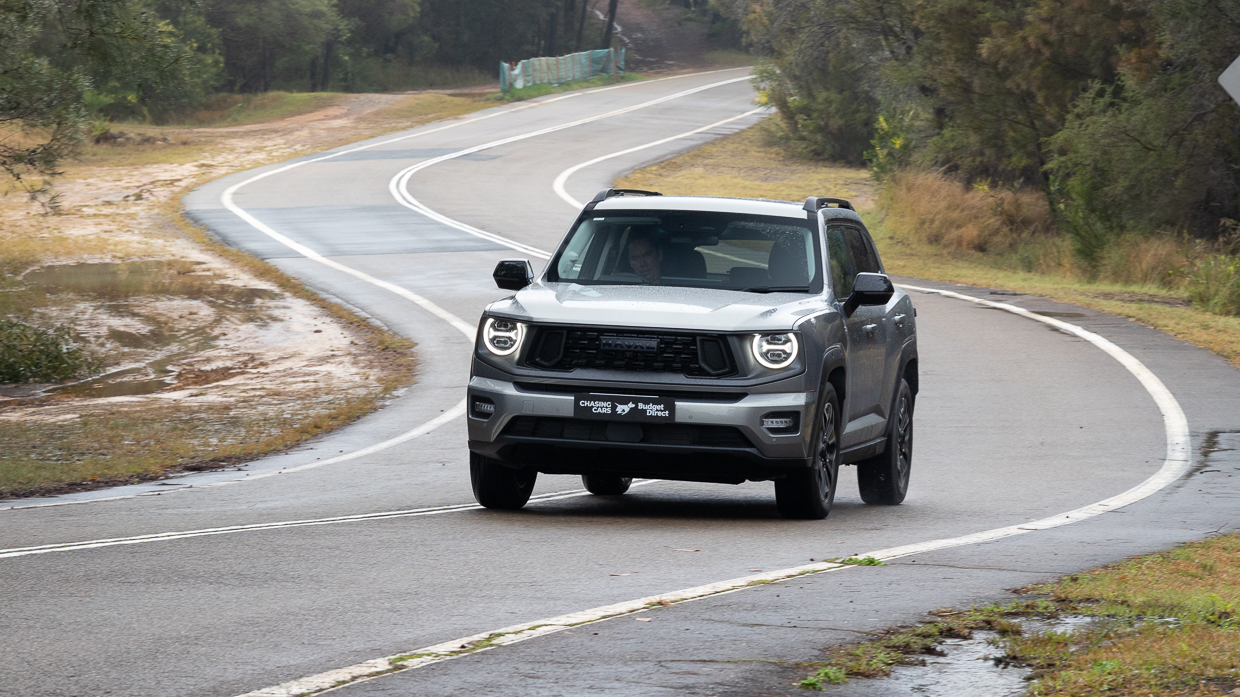
Also disappointing is the brake feel. It lacks linearity under constant pedal pressure, which returns oddly inconsistent retardation where you’re fluctuating pressure to stop the vehicle smoothly. There’s also a BEV-like one-pedal mode, which is an anomaly for a series-parallel hybrid…
But the most significant shortcoming are the driver ‘annoyance’ systems. Yes, they can be defeated via laborious touchscreen submenu digging after every restart — why so difficult? — but left activated they will leave a driver more irritable and flustered at the trip end than when they’d set off.
The worst culprit is the passive-aggressive “please focus on driving” reprimand. It bleats and displays its warning frequently while tracking in straight lines on motorways, if never really clarifying with its victim what its issue is. The ‘wiggle the steering wheel’ symbol that appears suggests it needs more animated steering input…or something.
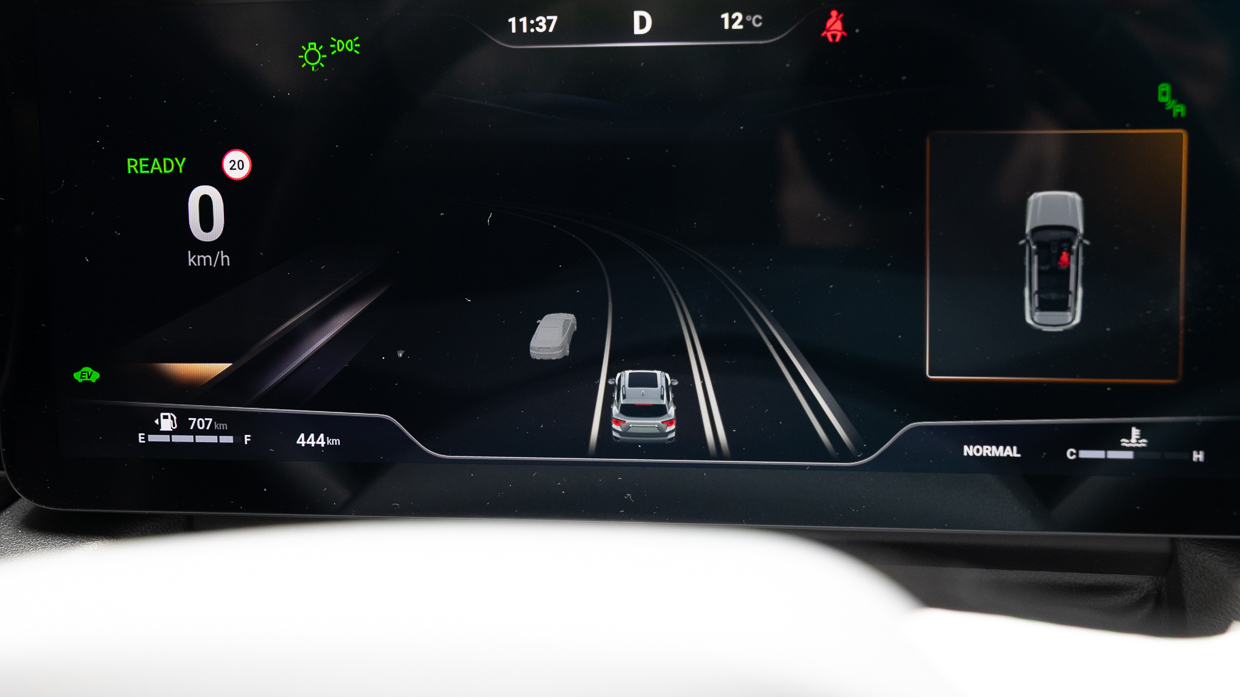
Almost as bad is the driver monitor system, which reprimands the driver excessively and enthusiastically, be it when attempting to simply adjust the climate control (unnecessarily buried in the touchscreen) or, ironically, when viewing the quite pointless ‘Live Traffic Visualisation’ graphic display in the driver’s screen.
When not assaulted by either system, the H7 also bings for unwarranted blind spot activation, chimes for the driver to “take a break” even moments after you’ve set off on a journey, or strong-arming the steering with active lane keeping intervention if the vehicle isn’t centred in the lane to its artificial intellect’s liking.
Much like its exterior styling, the H7’s interior pulls from trickbags of design inspiration from ‘rugged adventure’ themed rivals such as Wrangler, Bronco, Defender and even GWM’s own Tank stablemates…if without directly copying anything.
Key to all-terrain effects are the upright A-pillars, tall glass house, high ceiling and bluff vertical surfaces, including the dash fascia. It ticks all of the quasi-4×4 form boxes.
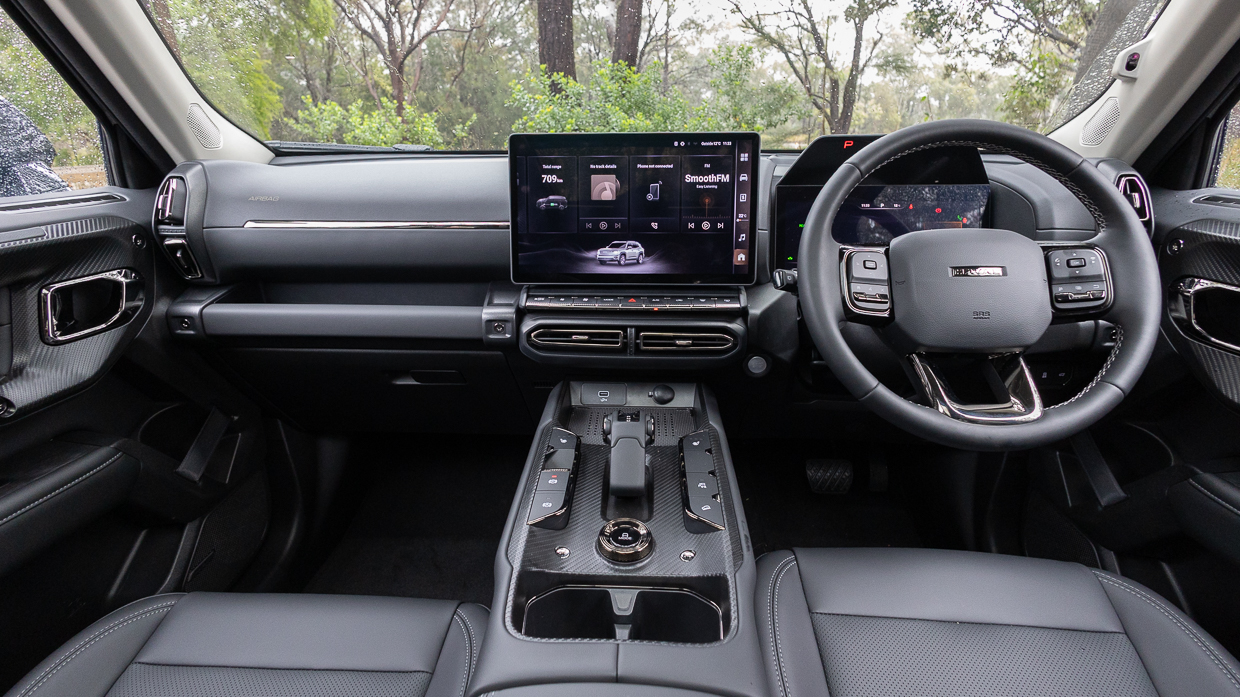
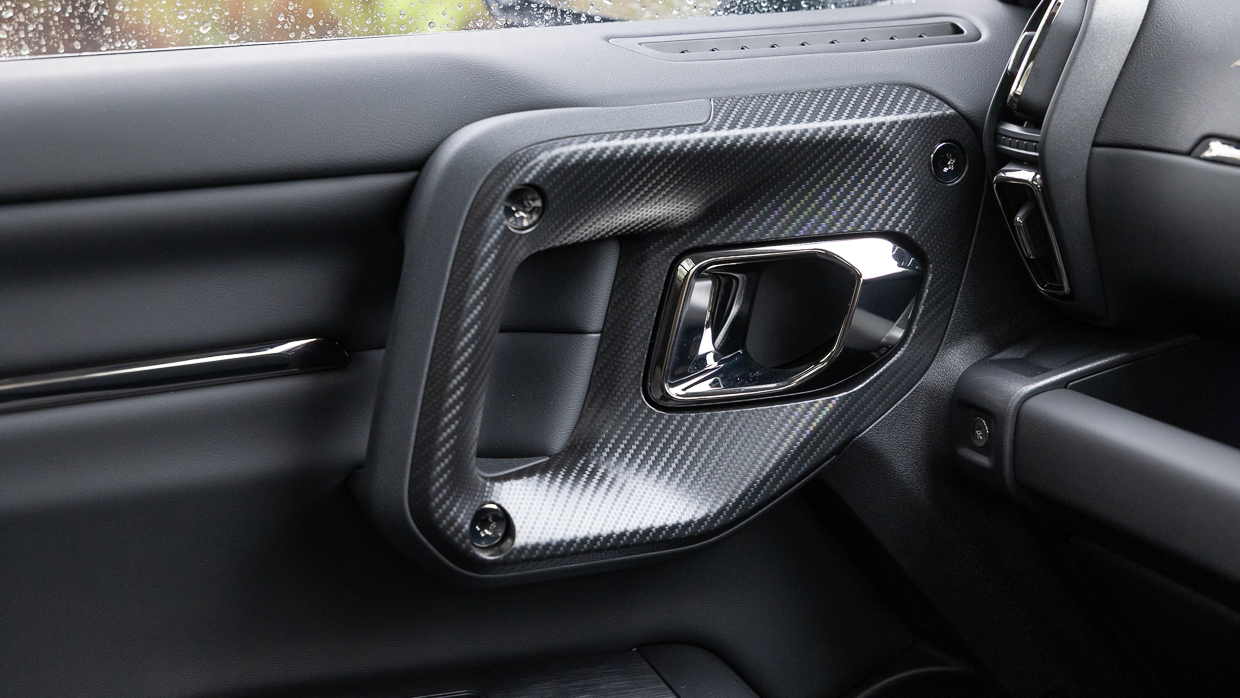
Then it doubles down on the off-road theme with its impossibly chunky door handles, faux grab handle moulded into the dash fascia ahead of the front passenger, and a slew of hex bolts scattered around the cabin that appear to be fixing points rather than purely cosmetics, though we weren’t brave enough to attack any with an allen key to find out.
It certainly doesn’t lack a sense of celebration, even outside of the big-screen effect (see below). The centre stack features GWM novel ‘pistol grip’ transmission control, one surprisingly intuitive to use, flanked by shortcuts button and an inductive charge pad minted in a faux carbon fibre-look surface. The single USB-A fitment is a bit chintzy.
The door cards are very ornate, with the aforementioned chunky handles set rearward, obscuring some of the driver’s arm rest controls such as mirror adjustment. The angled bottle holders with elastic retainers, though, are inspired, and feature in both the first and second rows.
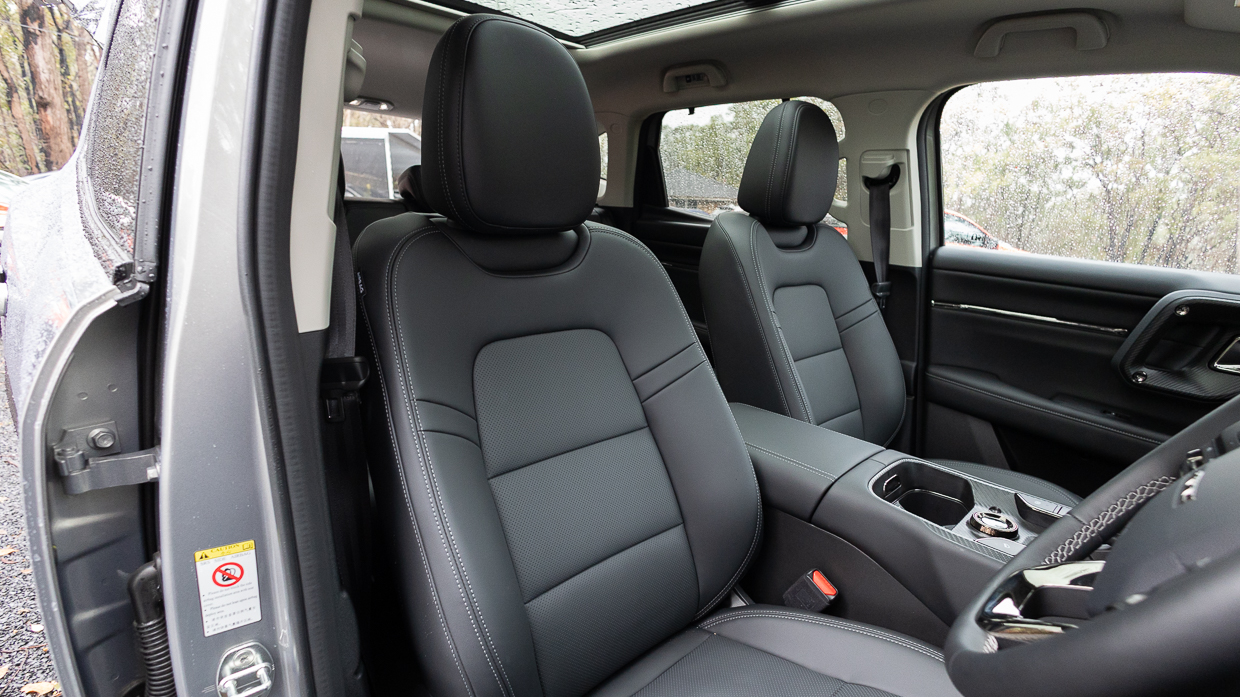
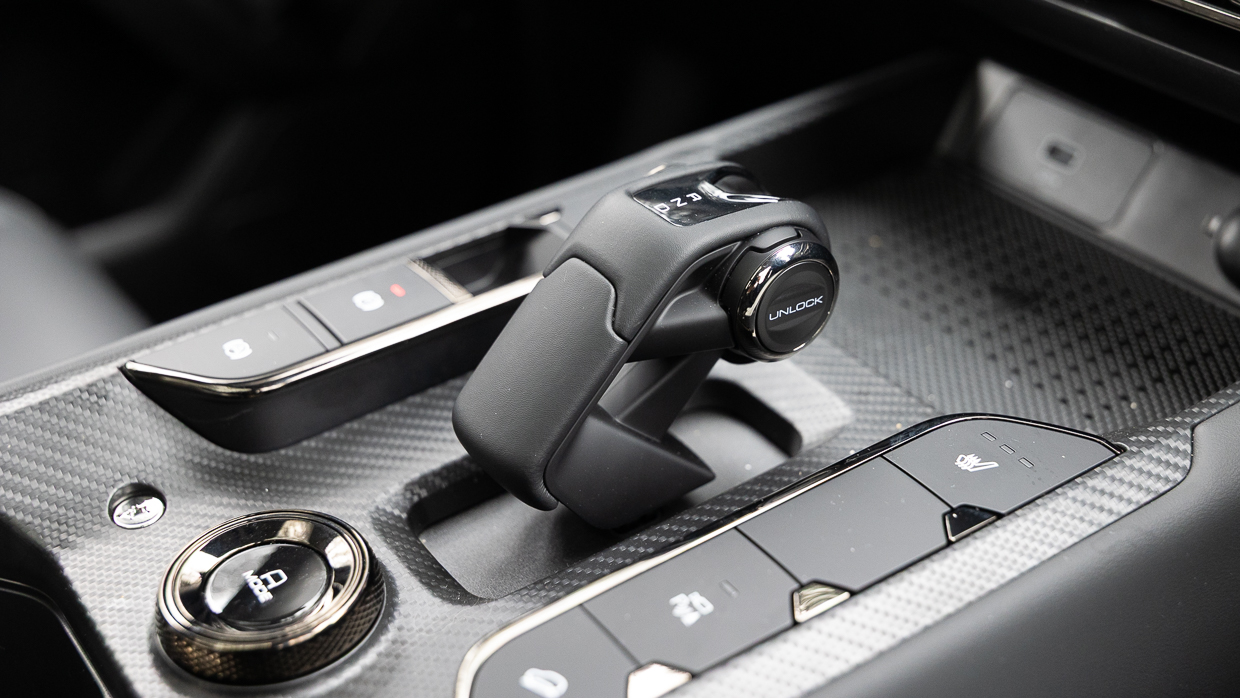
The front seats are fine: eight-way adjustable for the driver, trimmed in a reasonably supple leather and leatherette mix, and heated and cooled. But front row ergonomics could be better, if only because the slightly too laid-back steering wheel — trimmed in quite slippery leather, apparently — doesn’t offer enough reach adjustment for your reviewer’s tastes.
The 10.25-inch driver screen is bright and crisp, and pushes the speedo to the left to make room for the frankly pointless Live Traffic Visualisation display — just when the driver needs a wonky, inaccurate, in-screen ’80s Nintendo replication of the the real world otherwise easily viewed beyond the windscreen and sideglass is beyond this reviewer’s comprehension.
The huge 14.6-inch media touchscreen bedazzles as the jewel of the cabin, making for easy Apple CarPlay and Android Auto icon targets during well lit conditions…but also causing a blinding light at nighttime when it displays some of its brighter skins.
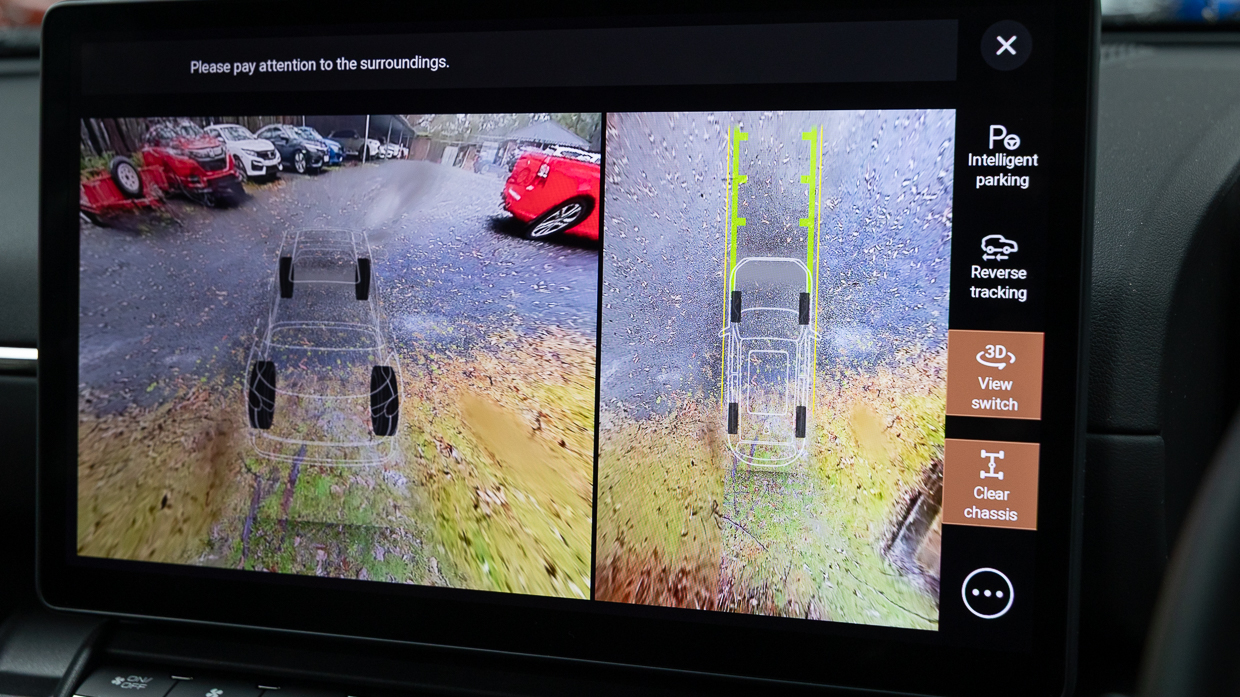
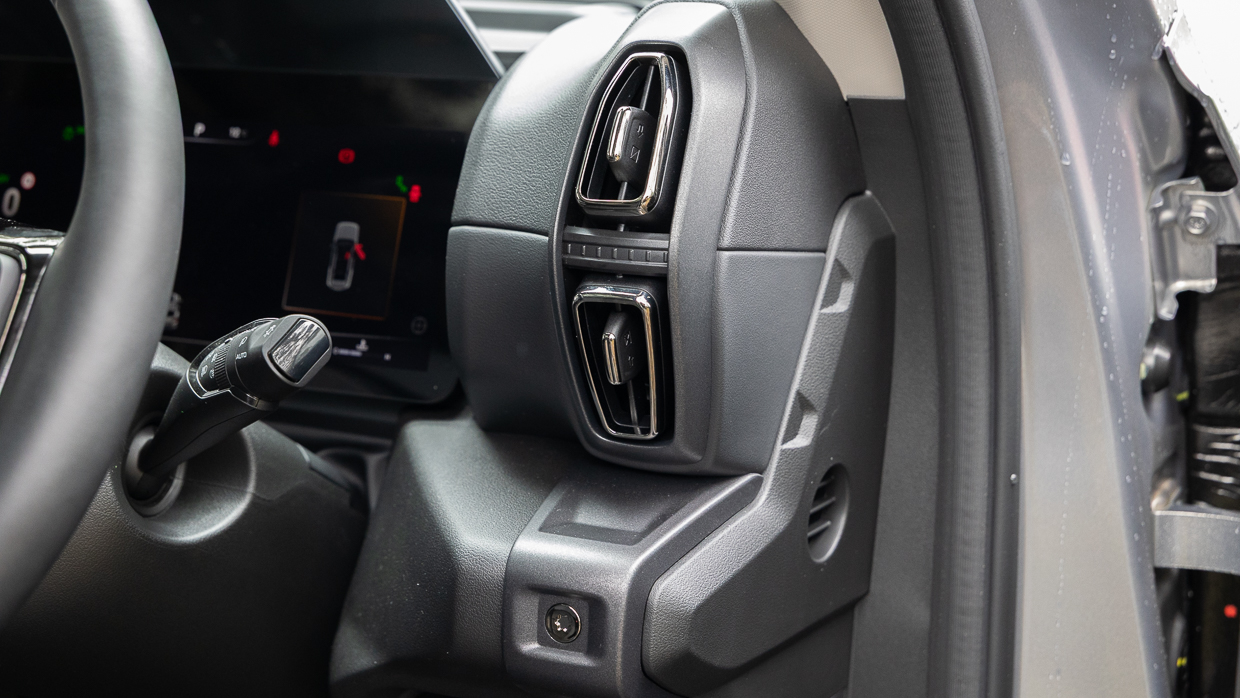
The multiview camera system — including a faux transparent chassis screen — is fully featured and razor sharp in any viewpoint though, like most mainstream offerings today, there’s no proprietary sat-nav (outside of your phone’s Google or Apple mapping).
What is tiresome, though, is that despite the dash-mounted shortcut buttons, climate control adjustment such as temperature tweaking needs to be done through the touchscreen.
Row two is where the H7 proves itself a fine SUV. It’s very roomy, with oodles of knee and head room, but the clincher is the very comfy rear bench with a deep base that angled such that taller adults are offered decent underthigh support. Row two is a nicer place to spend time than up front.
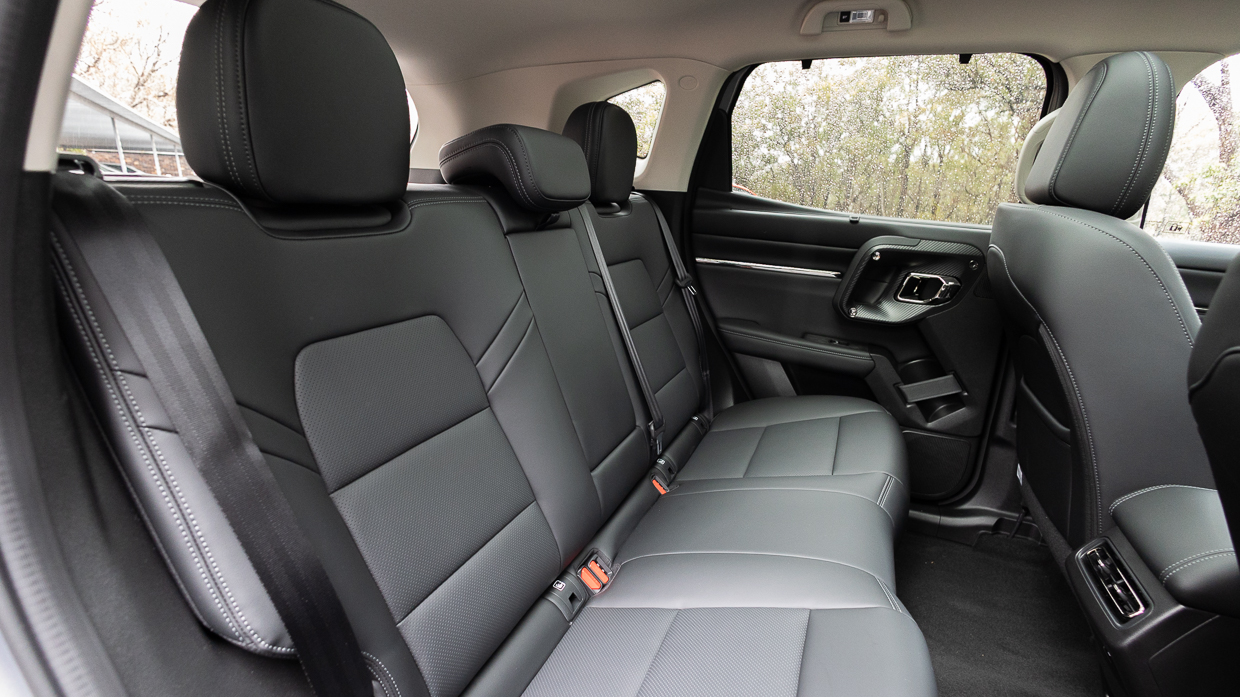
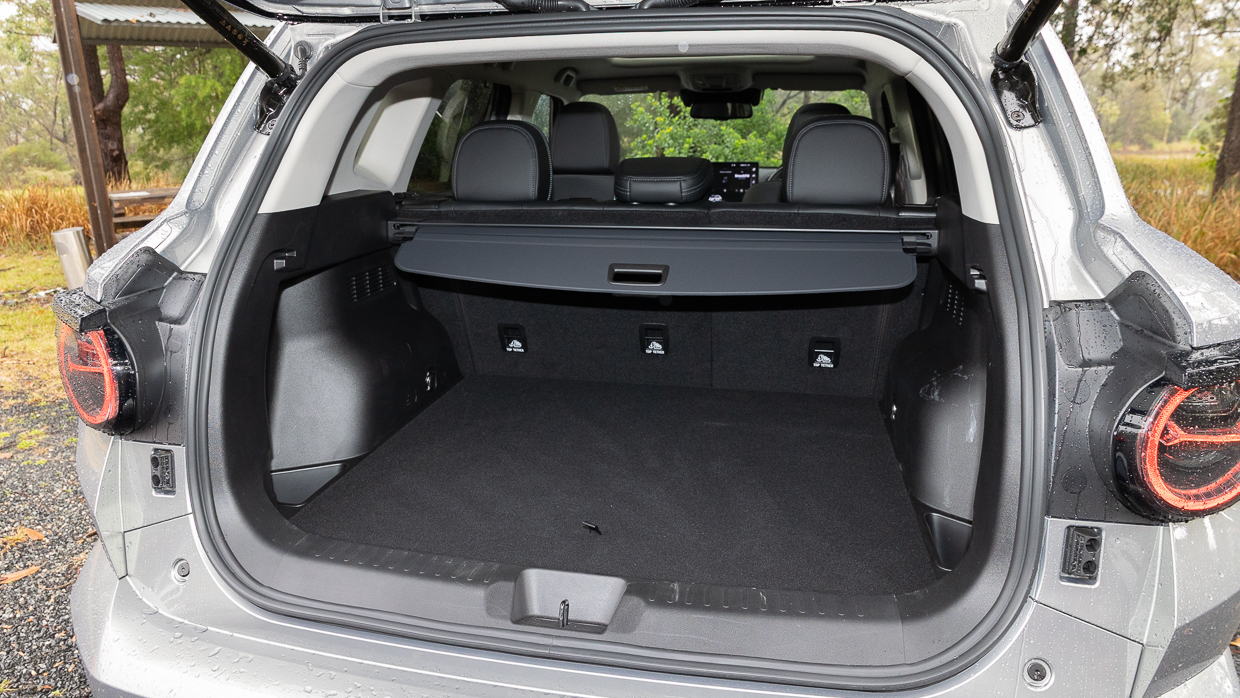
Rear features include rear air vents, a (stingy) single USB-A outlet, the aforementioned neat bottle holders, manual window blinds and a fold-down centre armrest with dual cupholder. The panoramic glass roof extends through to above rear passengers’ heads, so there’s a nice sense of airiness to the row two ambience too.
The kick-sensor powered tailgate works well in testing, opening to reveal 483 litres of bootspace, which is middling for segment, with row two seatbacks stowing to liberate 1362 litres. Despite offering enough room for a spare wheel, the underfloor fits a tyre inflator system.
While the H7 has yet to be tested by ANCAP at the time of review, GWM has promised that a rating will be forthcoming.
The closely related H6 scored five stars in (pre-facelifted) form in 2021, a rating that continues to stand for the petrol and hybrid version of the model (though excludes PHEV variants).
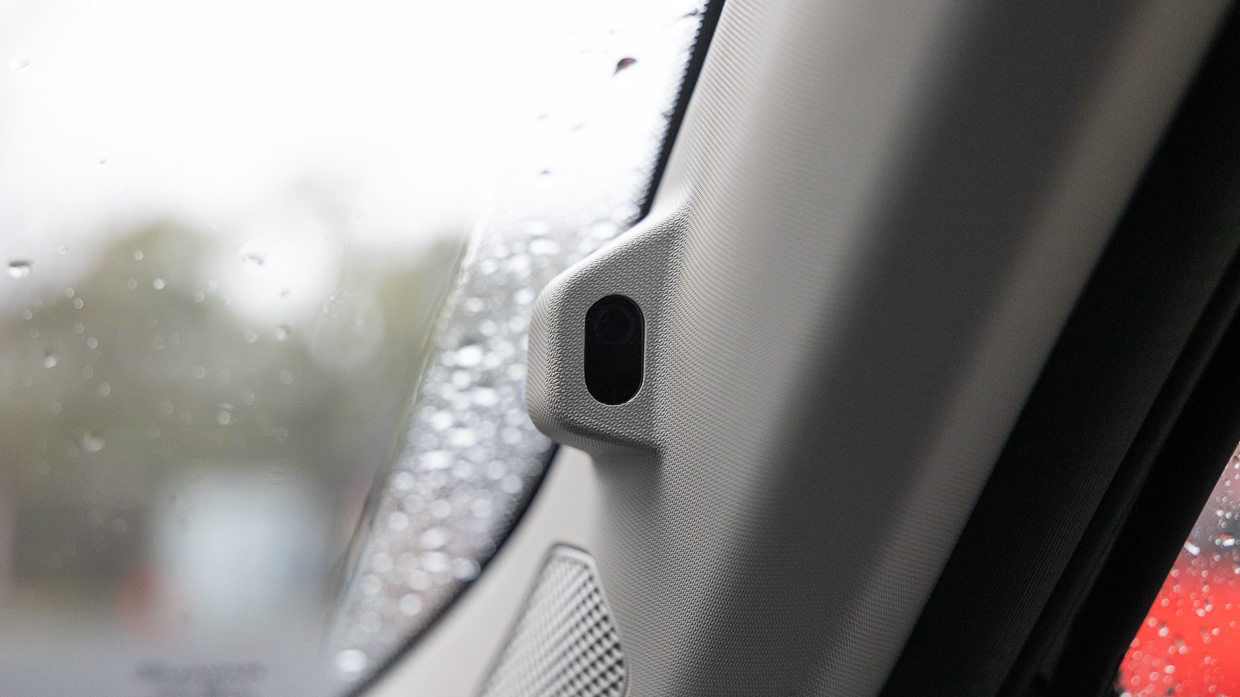
Standard safety features include:
As outlined in the driving section above, the H7 would repeatedly trigger three systems that left your reviewer more and more irritated and flustered per trip. The culmination of these systems’ behaviours could well — as it does in Tank 300 — amount to a deal-breaker for prospective H7 buyers.
The H7 is covered by GWM’s seven-year, unlimited-kilometre warranty, while the hybrid battery gets eight years of coverage.
Servicing isn’t nearly as thrifty as its segment’s leading lights. Its annual 10,000km intervals are shorter than the 15,000kms of Toyota RAV4, with a total outlay of $2145 over five years/50,000kms, around $800 pricier than its hybrid Toyota rival (with its 75,000km cap-priced coverage).
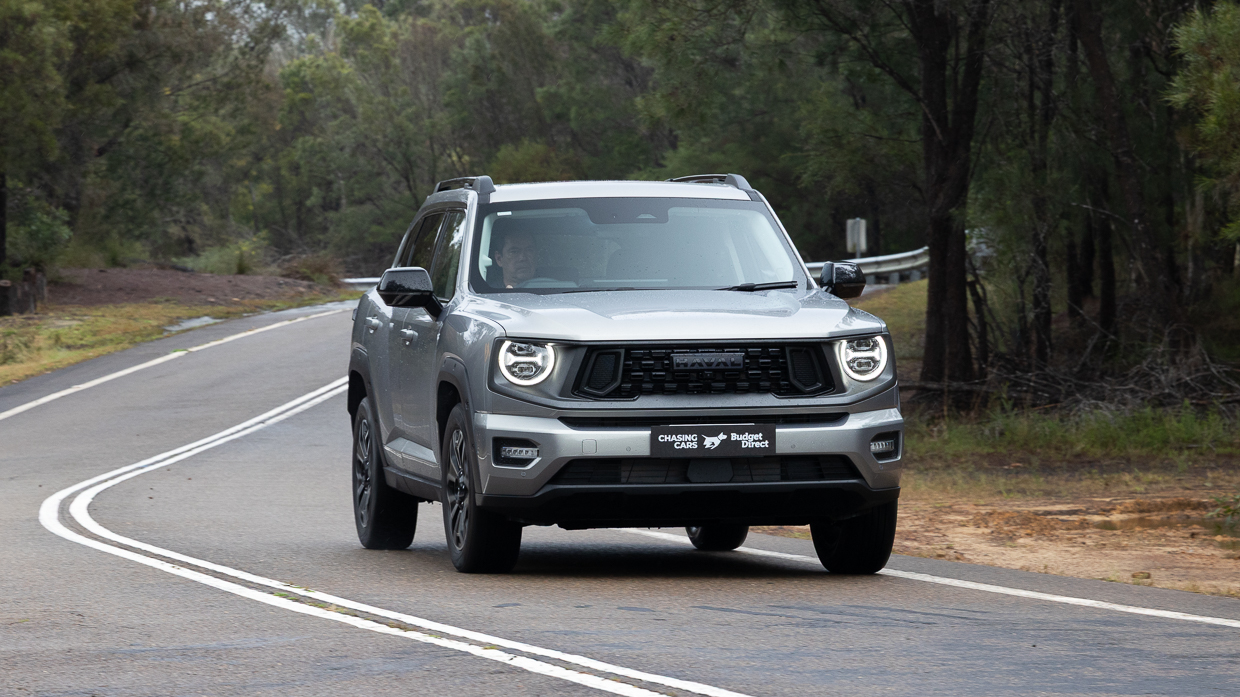
Minimum fuel rating is 91 octane, though the H7 proved thirstier than its 5.7L/100km claim, averaging out to seven litres in real-world testing.
It’s a shame that GWM’s ‘rugged’ and ‘adventurous’ middleground between H6 and Tank 300 is the only model of the trio to not (yet) offer an all-wheel drive option. And that’s a shame.
It’s a shame GWM hasn’t (yet) offered a H7 version with the 2.0-litre turbo petrol 4×4 system in Tank 300. Or the whopping 268kW and 760Nm plug-in petrol electric AWD system offered in the H6 SUV. Or even, for that matter, a cut-priced 2.0L petrol front driver (also in H6).
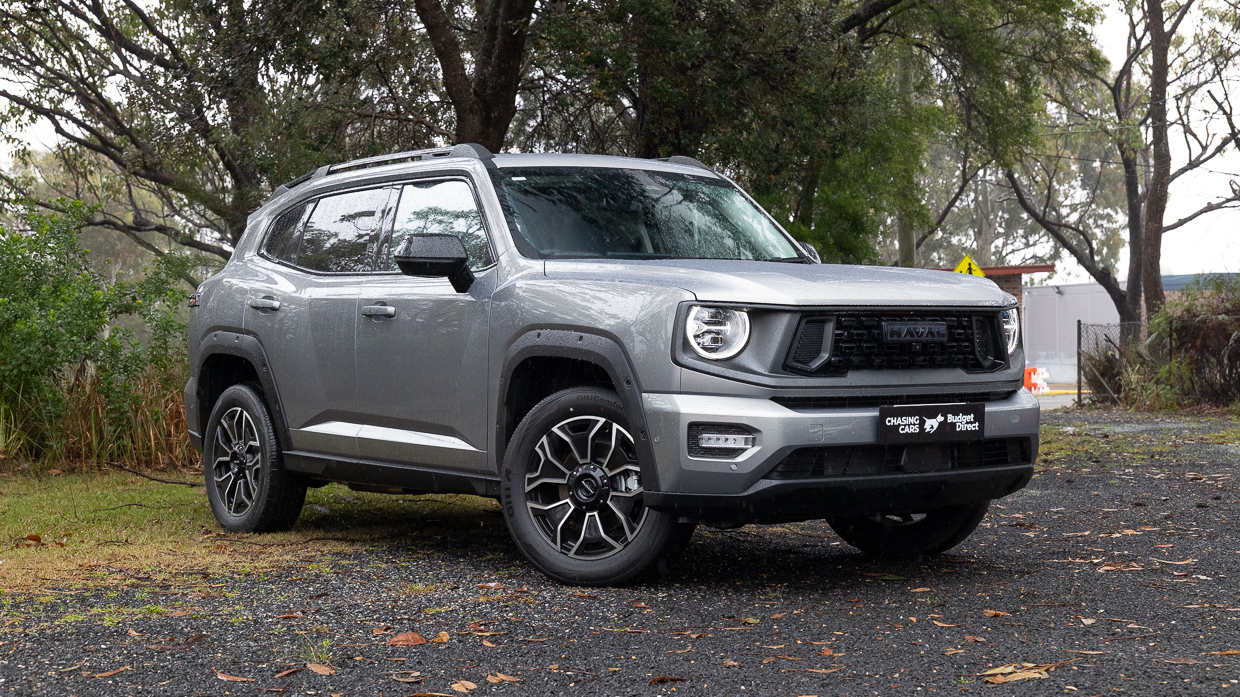
That all said, it makes sense that GWM has launched that H7 with a variant it has, as it hits the right price point with an appealing features set, an attractive hybrid designation and a positive official fuel consumption claim. But in the hands-on experience, the Vanta front-driver misses many marks in many areas.
GWM promises this is the first of many variations in its goal of making the H7 a broader, established model line. Further, it now has Holden’s ex-proving ground, Lang Lang, and ex-Holden R&D expertise on board to help localise its models for Aussie conditions, including the key areas of driver assistance systems.
But so much of these are things to come. And, as is also the case with the recently face-lifted H6, we expect there to be changes and updates that are perhaps worth waiting for.
Key specs (as tested)
About Chasing cars
Chasing Cars reviews are 100% independent.
Because we are powered by Budget Direct Insurance, we don’t receive advertising or sales revenue from car manufacturers.
We’re truly independent – giving you Australia’s best car reviews.
The estimate provided does not take into account your personal circumstances but is intended to give a general indication of the cost of insurance, in order to obtain a complete quote, please visit www.budgetdirect.com.au. Estimate includes 15%^ online discount.
^Conditions Apply
Budget Direct Insurance arranged by Auto & General Services Pty Ltd ACN 003 617 909(AGS) AFSL 241 411, for and on behalf of the insurer, Auto & General Insurance Company Limited(ABN 42 111 586 353, AFSL 285 571).Because we don’t know your financial needs, we can’t advise you if this insurance will suit you. You should consider your needs and the Product Disclosure Statement before making a decision to buy insurance. Terms and conditions apply.
Indicative quote based on assumptions including postcode , 40 year old male with no offences, licence suspensions or claims in the last 5 years, a NCD Rating 1 and no younger drivers listed. White car, driven up to 10,000kms a year, unfinanced, with no modifications, factory options and/or non-standard accessories, private use only and garaged at night.
^Online Discounts Terms & Conditions
1. Discounts apply to the premium paid for a new Budget Direct Gold Comprehensive Car Insurance, Third Party Property Only or Third Party Property, Fire & Theft Insurance policy initiated online on or after 29 March 2017. Discounts do not apply to optional Roadside Assistance.
2. Discounts do not apply to any renewal offer of insurance.
3. Discounts only apply to the insurance portion of the premium. Discounts are applied before government charges, taxes, levies and fees, including instalment processing fees (as applicable). The full extent of discounts may therefore be impacted.
4. We reserve the right to change the offer without notice.